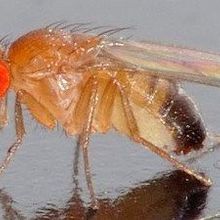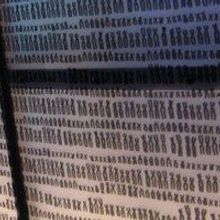Login
Subscriberetrotransposon, genetics & genomics

Infographic: Possible Mechanisms of Gene Transfer in Eukaryotes
Christie Wilcox, PhD | Jul 5, 2022 | 6 min read
Genetic studies have made it clear that eukaryotic horizontal gene transfer can and does happen. Exactly how, though, remains speculative.

Slideshow: Examples of Eukaryotic Horizontal Gene Transfer
Christie Wilcox, PhD | Jul 5, 2022 | 4 min read
Horizontally transferred genes play significant roles in eukaryotic genomes

Horizontal Gene Transfer Happens More Often Than Anyone Thought
Christie Wilcox, PhD | Jul 5, 2022 | 10+ min read
DNA passed to and from all kinds of organisms, even across kingdoms, has helped shape the tree of life, to a large and undisputed degree in microbes and also unexpectedly in multicellular fungi, plants, and animals.

Human Cells Can Synthesize DNA in Their Cytoplasm
Alejandra Manjarrez, PhD | Feb 8, 2021 | 4 min read
While studying a degenerative eye disease, researchers find the first evidence that cells produce endogenous DNA in the cytoplasm. Drugs that block this activity are linked with reduced risk of atrophic age-related macular degeneration.

Advancing Techniques Reveal the Brain’s Impressive Diversity
Sara B. Linker, Fred H. Gage, and Tracy A. Bedrosian | Nov 1, 2017 | 10+ min read
No two neurons are alike. What does that mean for brain function?

Infographic: Understanding Our Diverse Brain
Fred H. Gage, Tracy A. Bedrosian, and Sara B. Linker | Oct 31, 2017 | 2 min read
Recent advances in single-cell omics and other techniques are revealing variation at genomic, epigenomic, transcriptomic, and posttranscriptomic levels.

RNA Protects “Naked” Genomes from Retrotransposons
Shawna Williams | Jun 30, 2017 | 1 min read
Transfer RNA fragments prevent jumping genes from hopping around in the mouse embryo, when histone methylation can’t do the job.

Clyde A. Hutchison III: Genome Sequencer and Synthetic Biologist
Anna Azvolinsky | Aug 1, 2016 | 8 min read
From sequencing bacteriophages to synthesizing bacterial genomes to defining a minimal genome

Tethering Transposons
Ruth Williams | Oct 15, 2015 | 3 min read
Panoramix, a newly identified transcription repressor, takes the bounce out of jumping genes.

Wrangling Retrotransposons
Andrei Seluanov, Michael Van Meter, and Vera Gorbunova | Mar 1, 2015 | 8 min read
These mobile genetic elements can wreak havoc on the genome. Researchers are now trying to understand how such activity contributes to the aging process.

Schizophrenia’s Jumping Genetics
Jef Akst | Jan 6, 2014 | 2 min read
Researchers find evidence that transposable elements, also known as jumping genes, may contribute to the development of the psychiatric disorder.

DNA Jumps Between Vertebrates
Dan Cossins | Jan 3, 2013 | 1 min read
Scientists show that horizontal transfer of a particular DNA sequence among a diverse range of vertebrates is more widespread than previously believed.
Brain Mosaic
Sabrina Richards | Jul 1, 2012 | 2 min read
Retrotransposons contribute to genetic variability in human brain cells.
Jumping Genes a Cause of Cancer?
Ruth Williams | Jun 28, 2012 | 3 min read
Genome sequence analysis confirms mobile genetic elements are a mutagenic mechanism in a variety of cancers.
